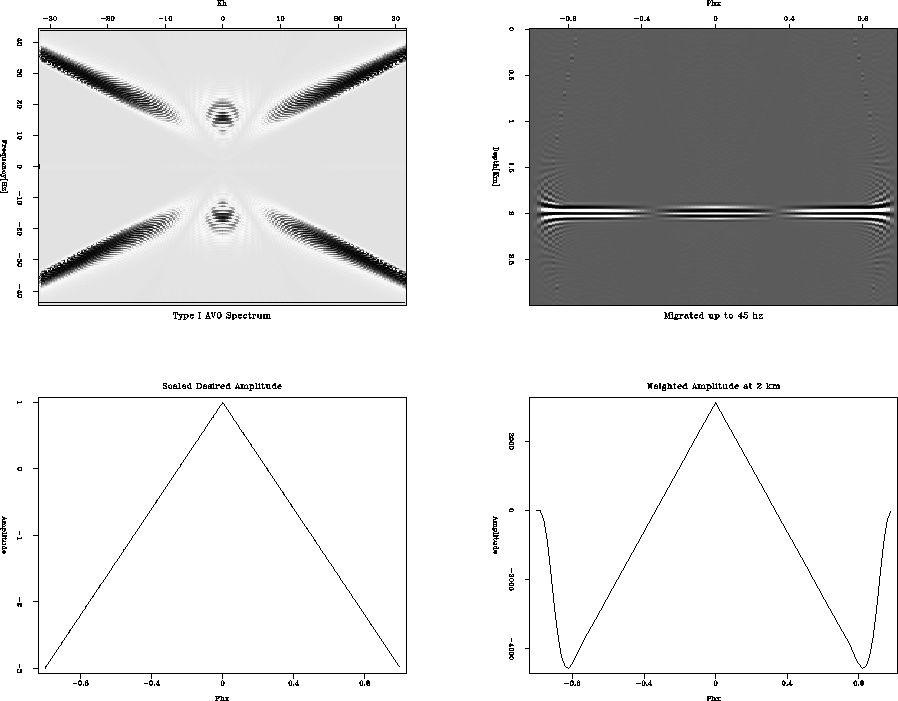 |
Figure 6 Weighted migration to 45 Hz. Top left is the data spectrum, top right is the migrated image gather. Bottom left is the desired amplitude, and bottom right is the actual amplitude at 2 km.
Our objective behind true amplitude migration is to use image gathers for amplitude variation with angle (AVA) analysis. We now present a case where the AVO intercept is positive, and there is a negative AVO gradient which causes a polarity reversal. This Class I AVO effect occurs in high impedance gas sands, present in continental environments, or in extremely deep water. The polarity reversal causes the classic ``dim spot'' in stacked sections Rutherford and Williams (1989). Figure 6 shows the same four panels as in Figures 4 and 5. The AVO gradient actually seems a little steeper in the migrated graph, however this is simply because the graph is normalized to zero, since energy drops to zero outside the maximum aperture of the migration. So in fact, the amplitude gradient is preserved perfectly.
 |